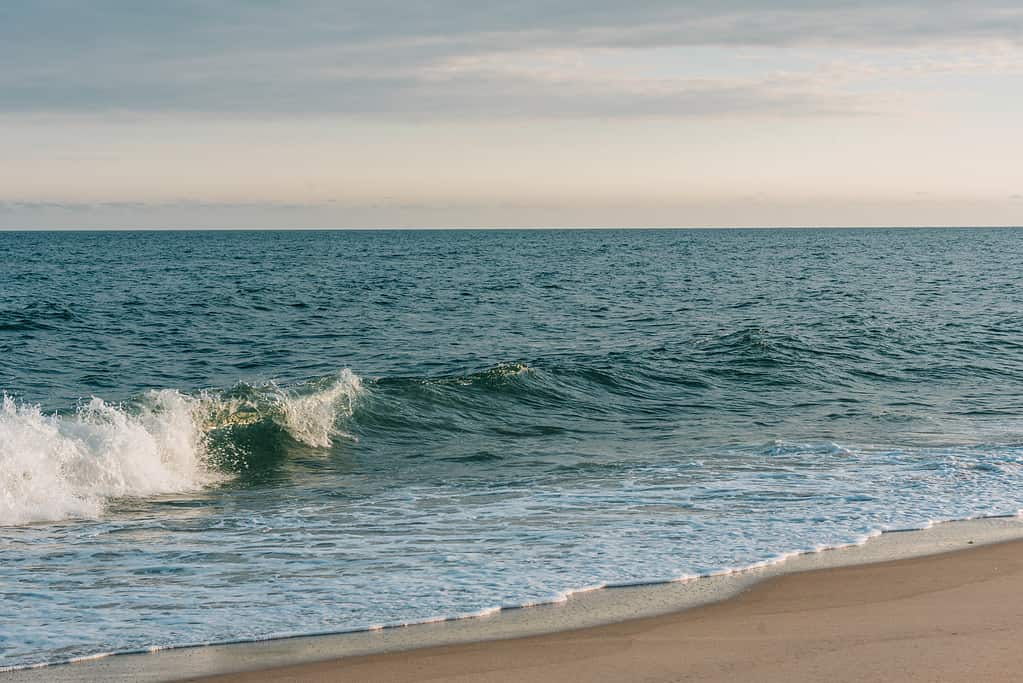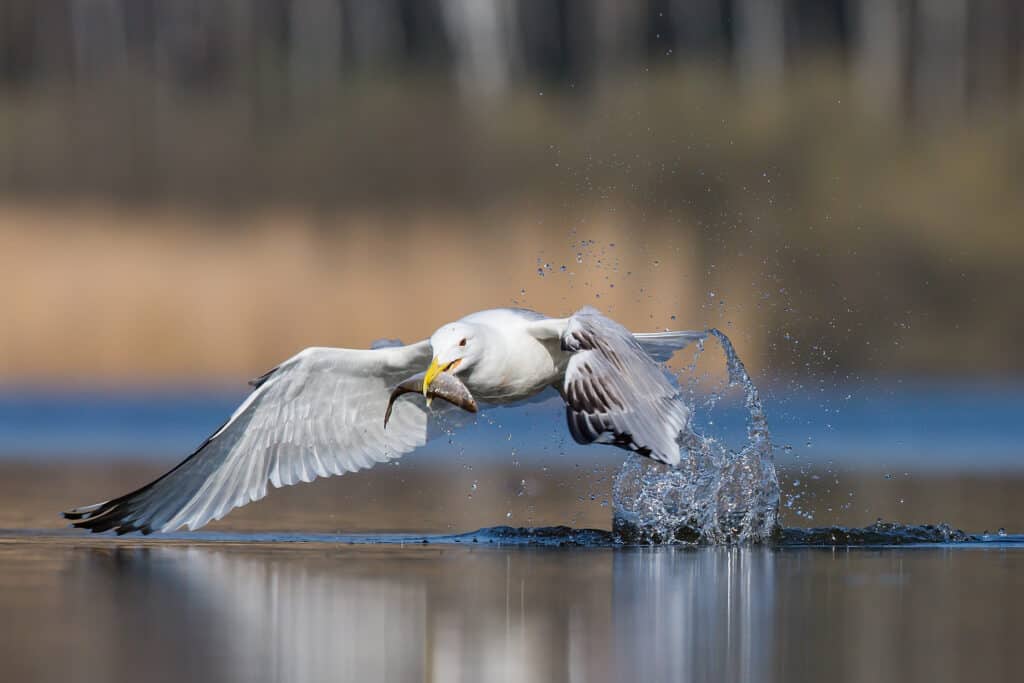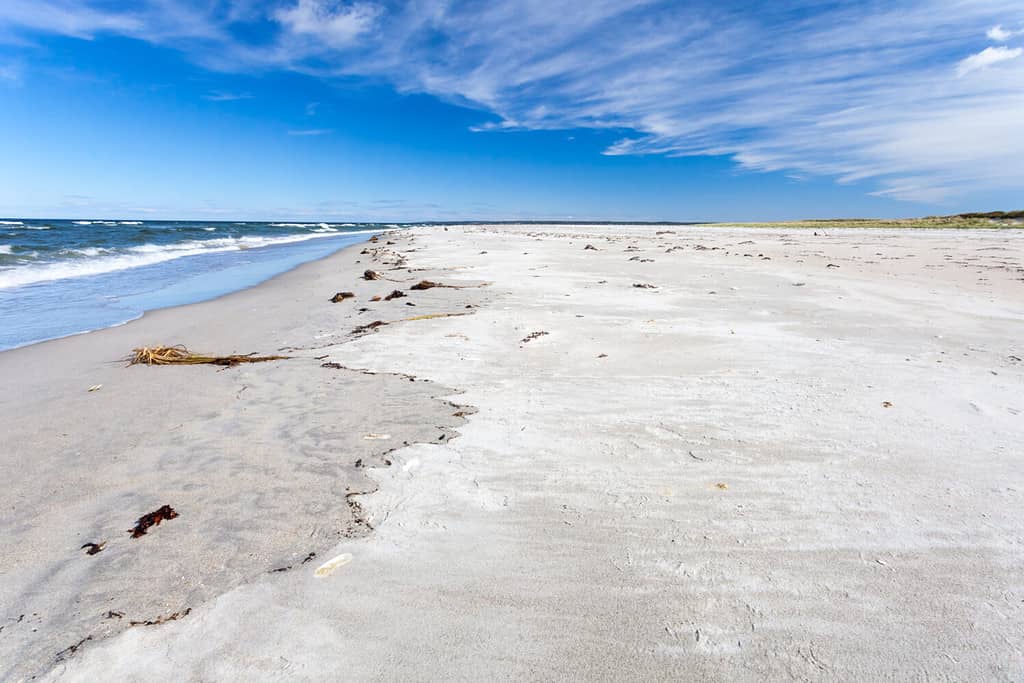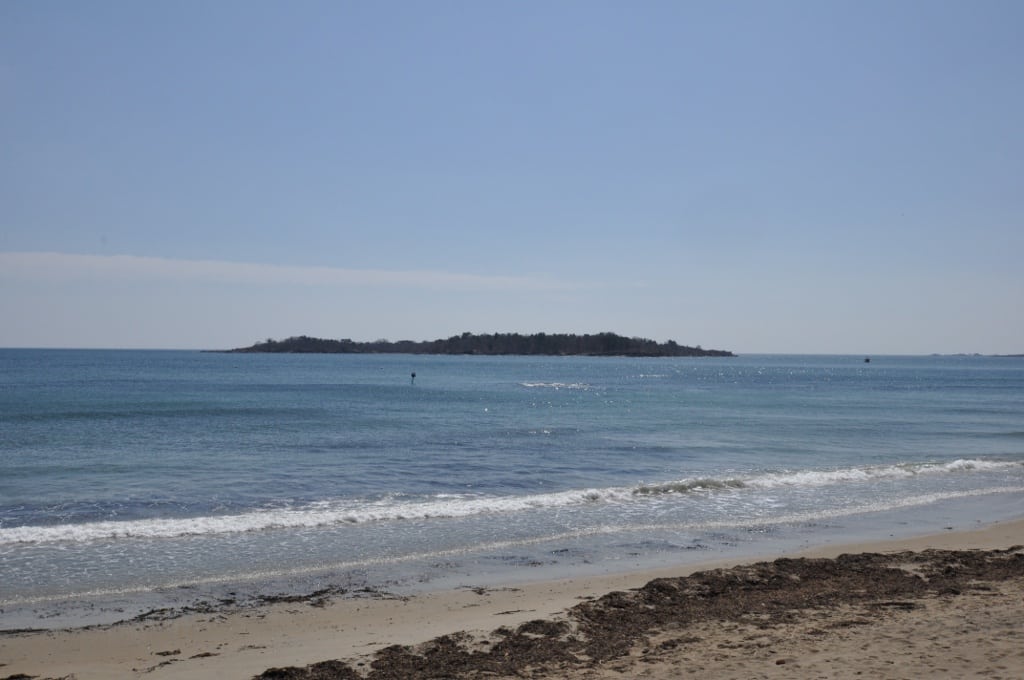A coastal state in the Northeast, Massachusetts is bordered to the north by Vermont and New Hampshire, to the west by New York, to the south by Connecticut and Rhode Island, and the east by the Atlantic Ocean. If you’re planning a trip to the Bay State, you may be wondering if you can visit Massachusetts’s lowest point.
Read on to learn where the lowest point in Massachusetts is.
The Lowest Point in Massachusetts
Since eastern Massachusetts borders the Atlantic Ocean, the lowest point occurs at sea level where the beach meets the ocean. The mean elevation of the state isn’t much higher at 500 feet above sea level. The highest point in Massachusetts, however, the peak of Mount Greylock, towers over the state’s lowest point, at 3,491 feet.
At the state’s lowest point, where the shore meets the ocean, the elevation is 0 feet above sea level. With over 1,500 miles of snaking coastline, there are plenty of places to enjoy the lowest point in Massachusetts.
The Lowest Point in Massachusetts: The Atlantic Ocean
The Atlantic Ocean is the second-largest of the five oceans on our planet and covers approximately one-fifth of the Earth’s surface in salt water. It also accounts for about 28% of the total volume of our planet’s water. The Atlantic Ocean is divided by the equator into two parts: the North Atlantic Ocean and the South Atlantic Ocean. The average depth of this enormous body of water is an astounding 11,962 feet. This ocean hosts an intricate, interdependent array of marine life from zooplankton, corals, and aquatic plants to apex predators such as great white sharks. The largest animal on Earth, the blue whale (Balaenoptera musculus) swims throughout the Atlantic.

The lowest point in Massachusetts occurs where the shoreline meets the Atlantic Ocean.
©Jon Bilous/Shutterstock.com
Marine Life off Massachusetts’s Coast
The coastal waters of Massachusetts are home to a highly diverse range of sea life. Fish such as Atlantic cod, yellowtail flounder, striped sea bass, bluefin tuna, mackerel, and halibut are found in these waters. Shellfish species such as the American lobster, ocean quahogs, sea scallops, and squid occur off Massachusetts’s coast.
Several species of sharks also pass through these coastal waters. They include the shortfin mako, great white, porbeagle, basking, blue, sand tiger, thresher, spiny, dusky, and hammerhead sharks.
Marine mammals also frequent the coastal waters of Massachusetts. They include humpback, fin, mink, sei, blue, and sperm whales. Several dolphin and porpoise species also roam these waters. They include the Atlantic white-sided and short-beaked dolphins and the harbor porpoise.
In addition to the presence of aquatic animals in the coastal waters, many species of seabirds and shorebirds live and hunt along the Massachusetts coastline. They include the laughing gull, herring gull, razorbill, northern gannet, dunlin, killdeer, willet, piping plovers, and the short-billed dowitcher.

The herring gull is one of several species of seabirds that hunt off the coast of Massachusetts.
©Lukas Pavlacik/Shutterstock.com
Visiting the Lowest Point in Massachusetts
If you want to visit the lowest point in Massachusetts, you have many opportunities with over 15 ocean beaches and oceanside towns to visit. Below, we’ll discuss some of the most interesting places to visit at sea level.
Crane Beach
Widely considered one of the most pristine beaches in Massachusetts, Crane Beach is a must-visit for nature lovers and sunbathers alike. Located in the seaside town of Ipswich, Massachusetts, this park consists of four miles of white, sandy coastline, dunes, boardwalks and trails, red maple swamps, and a maritime pitch pine forest.
This area is protected from development so you can enjoy the beach unobstructed by beach homes or commercial buildings. This beach attracts over 200,000 visitors each year. The beach is open year-round. You can visit from 8 a.m. until sunset. Dogs are welcome on the beach from October 1st through March 30th.
As well as being a spectacular site for human visitors, Crane Beach is also one of the most important nesting sites for the shorebird, the piping plover. In the Massachusetts region, this little shorebird is threatened and included under the Endangered Species Act. In recent years, their numbers have been increasing. This is thanks in part to ensuring the protection and restoration of crucial nesting sites like Crane Beach.

Crane Beach of Ipswich, Massachusetts is a protected location, and as such, provides pristine, unobstructed views of the Atlantic Ocean.
©Luboslav Tiles/Shutterstock.com
Misery Islands
If historic tourism is your thing, plan a trip to the Misery Islands. These lands are accessed via Manchester Bay off the Manchester-by-the-Sea and near the infamous town of Salem. Misery Islands are so named after a shipbuilder, Captain Robert Moulton, who became stranded there in the 1620s during a winter storm. He described his experience as enduring “three miserable days”. The two islands total 87 acres, with 83-acre Great Misery and 4-acre Little Misery. Before Moulton’s experience, the Agawam tribe had inhabited and used the islands for centuries. As is the history with much of the US, the 17th-century colonial state forcibly displaced the Agawam from the region and claimed the land for its own. Rather than one man experiencing three days of poor weather, perhaps this colonial displacement is the real source of misery on these islands.
After the displacement of indigenous peoples around 1670, a series of colonial families took control of the islands, farming the land. In 1900, a group of Boston investors purchased Misery Islands and proceeded to convert them into an extensive summer resort for the wealthy of Boston and North Shore. This venture failed and soon another group of investors moved into to try their hand at exploiting the land. This time, investors built 26 cottages to sell as summer homes. However, in 1926, a fire ravaged the island, burning the homes and sending the wealthy interlopers packing. In 1935, an oil company petitioned the Salem City Council to build oil storage tanks on the islands. Thankfully, intense public outcry ensued and the council rejected the proposal. Finally, by 1997 a land conservation and historic preservation group, the Trustees of Reservations, had fully acquired both islands.
Visiting
Today, the Trustees of Reservations protect the Misery Islands. Visitors can reach these historic islands by boat, canoe, or kayak. You can traverse 2.5 miles of trails that wind across aspen groves, meadows, rocky shorelines, and rugged overlooks.

From the private beach on Beverly Farms, you can view Great Misery Island.
Salem
If interested in seeing the Misery Islands, you might as well combine the trip with a visit to Salem, Massachusetts. In addition to touring the spooky, historic town, you can also visit Waikiki Beach on Winter Island where the shoreline meets the ocean. This beach is quiet, features a small campground, and is an excellent destination for those who want to avoid crowded beaches. At Waikiki Beach, you can explore tidal pools brimming with marine life, camp, gaze out over the ocean from a rocky shoreline, and swim during the summer months.
Another sea-level location to visit in the town of Salem is Dead Horse Beach. So named from its history as an equine burial ground in the 1850s, the area today is a popular local beach. In addition to its strange name, Dead Horse Beach is unique for its sand heavily mixed with weathered shards of blue mussels. While the texture of this beach may not be the best for barefoot frolicking, it is a great destination to observe the unique blue colors and textures. Atlantic blue mussels of the Mytilus genus enjoy a large population in the region. They filter feed on phytoplankton from the water column. These little mollusks are a crucial part of the region’s aquatic food chain, serving as prey for a host of crustaceans and birds.

On Waikiki Beach in Salem, Massachusetts, you can camp, swim, explore tidal pools, and view a small lighthouse.
The photo featured at the top of this post is © Bruce Goerlitz Photo/Shutterstock.com
Thank you for reading! Have some feedback for us? Contact the AZ Animals editorial team.







